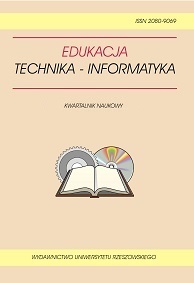Maximum Power Point Tracking Methods in Wind and Solar Conversion Systems for Standalone Generation
DOI:
https://doi.org/10.15584/eti.2018.1.7Keywords:
MPPT methods, wind energy, solar energy, power electronics convertersAbstract
In education in the majoring of Energetics at the Faculty of Electrical and Computer Engineer-ing of Rzeszow University of Technology, special attention is paid to the knowledge of renewable energy carriers. This article explores various MPPT techniques lectured in “Unconventional ener-gy sources”. The use of renewable energy resources requires the use of energy converters. The power generated by photovoltaic modules or wind generators is dependent on the point at which the current-voltage characteristics work. For control of the optimum voltage and current values for which the power produced by the PV module is highest, the MPPT algorithm is the equivalent of the maximum power point tracking (MPPT) algorithm.Downloads
Published
2018-03-30
How to Cite
SOBCZYŃSKI, D., & BARTMAN, J. (2018). Maximum Power Point Tracking Methods in Wind and Solar Conversion Systems for Standalone Generation. Journal of Education, Technology and Computer Science, 23(1), 66–72. https://doi.org/10.15584/eti.2018.1.7
Issue
Section
SELECTED PROBLEMS OF TECHNICAL EDUCATION
License
Copyright (c) 2018 Journal of Education, Technology and Computer Science

This work is licensed under a Creative Commons Attribution-ShareAlike 4.0 International License.

